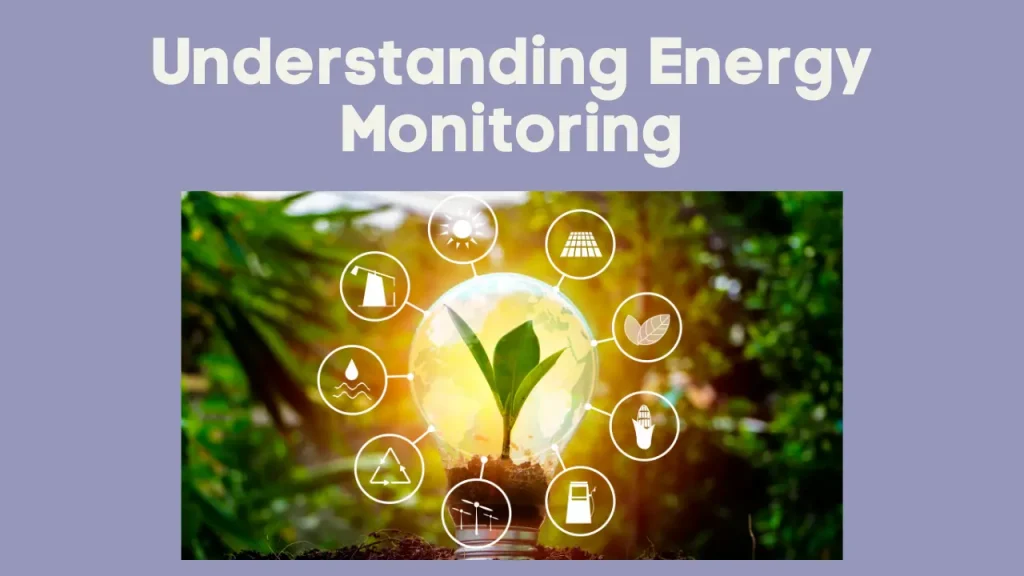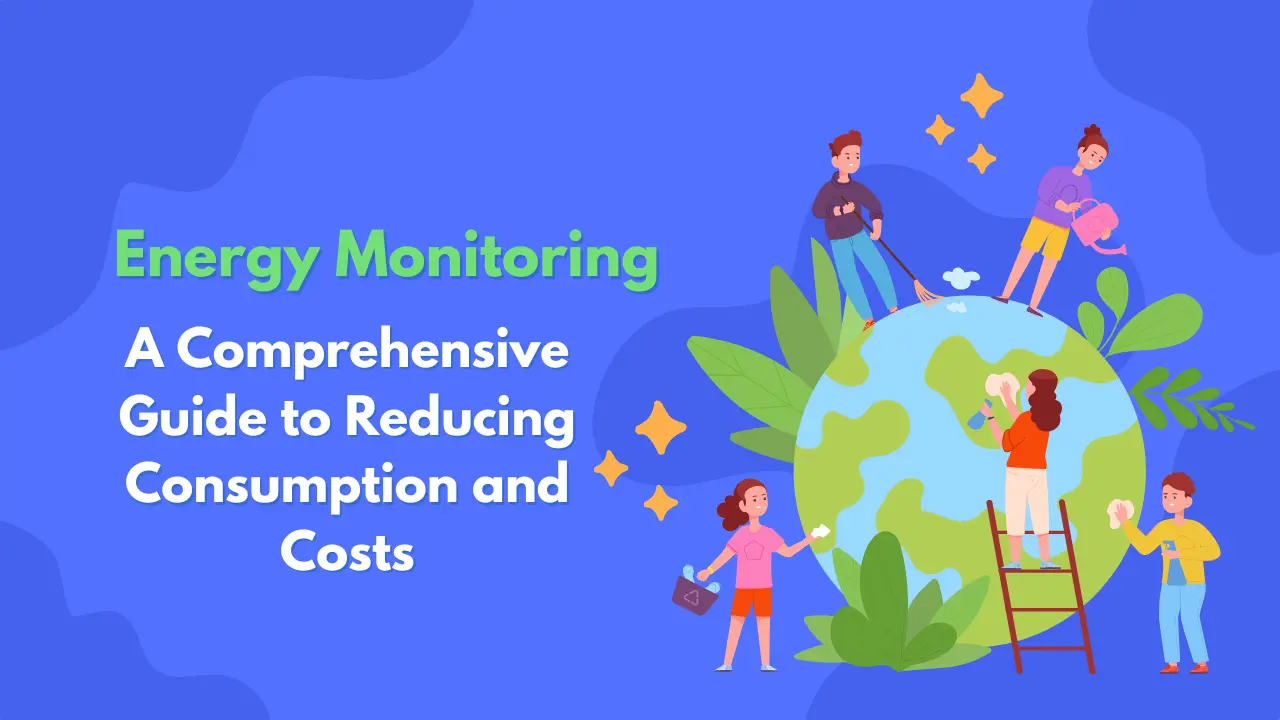Introduction to Energy Monitoring
Energy monitoring involves tracking and analyzing energy consumption to identify patterns, inefficiencies, and opportunities for savings. By understanding how energy is used, individuals and organizations can implement strategies to reduce waste, lower costs, and promote sustainability.

Understanding Energy Monitoring
At its core, energy monitoring involves collecting data on energy usage through various devices and systems. This data is then analyzed to provide insights into consumption habits, peak usage times, and areas where energy efficiency can be improved. Modern energy monitoring systems often utilize smart meters and sensors to provide real-time data, enabling proactive management of energy resources.
Importance of Energy Monitoring
In today’s world, where energy costs are rising and environmental concerns are paramount, monitoring energy usage has become essential. By monitoring consumption, individuals and businesses can make informed decisions that lead to significant cost savings and a reduced carbon footprint.
Benefits Energy Monitoring
Cost Savings
One of the most immediate benefits of energy monitoring is the potential for cost savings. By identifying emerging devices and inefficient practices, users can take corrective actions to reduce their energy bills. For instance, adjusting the operation of heating and cooling systems based on usage patterns can lead to substantial savings.
Enhanced efficiency energy monitoring provides sights into how and when energy is used, allowing for the optimization of operations. This can lead to improved efficiency in both residential and commercial settings. For example, businesses can sule high-energy tasks during off-peak hours to take advantage of lower energy rates.
Environmental Impact
Redug energy consumption not on saves money but also benefits the environment. Lower energy usage means reduced dd on power plants, leading to decreased greenhouse gas emissions. By monitoring and managing energy production, individuals and organizations contribute to a more sustainable future.
Types of Energy Monitoring Systems
Residential Systems
Designed for homeowners, residential energy monitoring systems track the energy usage of household appliances and systems. These systems often provide real-time data that can help identify opportunities for energy savings, such as unplugging devices that consume power in standby mode.
Commercial Systems
Commercial energy monitoring systems are tailored for businesses and organizations. They offer detailed insights into energy consumption across various departments or processes, enabling businesses to implement energy-saving measures and reduce operational costs.
Industrial Systems
Industrial energy mounting systems are designed for large-scale operations, such as manufacturing plants. They monitor energy usage across complex processes and machinery, helping to identify inefficiencies and optimize production to save energy.

Key Features of Advanced Energy Monitoring Seems
- Real-Time Data Collection: Provides immediate insights into energy consumption patterns.
- Historical Data Analysis: Allows users to track any usage over time and identify trends.
- Alerts and Notifications: Notifies users of unusual egy consumption or potential issues.
- Integration with Other Systems: Can be integrated with or building management systems for comprehensive control.
- User-Friendly Interface: Offers intuitive dashboards and rets for easy understanding.
Choosing the Right Energy Monitoring System
When selecting energy monitoring system, consider the following factors:
| Factor | Considerations |
|---|---|
| Compatibility | Ensure the system is compatible with your existing infrastructure and dices. |
| Scalability | Choose a system that can grow with your needs, especially if you plan to expand operations. |
| Data Accuracy | Look for systems that provide precise and reliable data to make informed decisions. |
| Ease of Use | The system should have an intuitive interface that is easy to navigate. |
| Cost | Consider both the initial investment and ongoing maintenance costs. |
| Customer Support | Choose providers that offer strong customer support and provide ample training resources. |
| Integration Capabilities | Ensure the system can integrate with other tools and platforms you use. |
Top Energy Monitoring Devices
| Device | Key Features | Price Range | User Ratings |
|---|---|---|---|
| Sense Energy Monitor | Real-time energy tracking, smart appliance detection, easy app integration | $299 | ⭐⭐⭐⭐½ |
| Emporia Vue 2 | Budget-friendly, supports multiple circuits, detailed usage reports | $79 | ⭐⭐⭐⭐ |
| Neurio Home Monitor | Great for solar energy tracking, provides energy-saving insights | $249 | ⭐⭐⭐⭐ |
| Flume 2 Smart Home Monitor | Combines water and energy monitoring, mobile alerts for usage patterns | $199 | ⭐⭐⭐⭐½ |
Implementing an Energy Monitoring System
Step 1: Assess Your Energy Requirements
- Identify which areas of your home or business need monitoring.
- Determine whether you need to track the entire property or specific high-energy appliances.
Step 2: Choose a Suitable System
- Compare devices based on features, compatibility, and budget.
- Ensure the system supports your required energy analytics and integration needs.
Step 3: Install the Sensors
- Install sensors on electrical circuits or directly on appliances.
- Follow the manufacturer’s instructions or seek professional help for installation.
Step 4: Configure the Software
- Connect the monitoring system to your network.
- Set up dashboards and configure alerts based on your energy consumption preferences.
Step 5: Analyze and Optimize
- Regularly review energy reports to identify usage patterns and inefficiencies.
- Adjust appliance usage and implement energy-saving measures.
Challenges in Energy Monitoring
1. Data Accuracy Issues
Sometimes, sensors may provide inaccurate readings due to calibration errors or signal interference. To resolve this:
- Regularly calibrate your sensors.
- Choose high-quality monitoring devices for better accuracy.
2. Integration Problems
Some energy monitoring systems may not integrate seamlessly with existing systems or smart home setups.
- Ensure compatibility before purchasing.
- Look for systems that support open APIs for easier integration.
3. Privacy Concerns
As energy data is sensitive, privacy can be a concern.
- Choose systems with strong data encryption and secure cloud storage.
- Review the manufacturer’s privacy policy before setting up the system.
Emerging Trends in Energy Monitoring
1. AI-Powered Analytics
Artificial Intelligence (AI) is transforming energy monitoring by providing predictive insights and recommendations for optimizing energy consumption.
2. Blockchain for Secure Data Tracking
Blockchain technology is being explored for transparent and tamper-proof energy monitoring systems.
3. Integration with Renewable Energy Sources
As more homes adopt solar and wind power, energy monitoring systems are being designed to optimize the use of renewable energy sources.
4. Wireless and IoT Integration
Wireless energy monitors and IoT-enabled sensors are becoming increasingly popular for their ease of installation and enhanced functionality.
Energy Monitoring and Sustainability
Energy monitoring is critical for achieving sustainability goals. By tracking and optimizing energy usage, individuals and businesses can:
- Reduce Carbon Footprint: Lower energy consumption leads to fewer greenhouse gas emissions.
- Adopt Renewable Energy: Monitoring helps maximize the use of renewable energy sources.
- Contribute to Circular Energy Economy: Efficient energy usage reduces strain on the power grid.
Energy Monitoring for Businesses
Energy monitoring provides businesses with actionable insights that improve operational efficiency and reduce costs. Here’s why it’s essential:
- Cost Savings: Identify areas of energy wastage and cut unnecessary costs.
- Regulatory Compliance: Meet energy efficiency regulations and sustainability targets.
- Improved Productivity: Optimize energy-intensive operations for better performance.
Businesses can integrate monitoring systems with their building management systems for a comprehensive view of energy usage and automated control.

Energy Monitoring for Smart Homes
Smart home energy monitoring systems provide a seamless way to manage and reduce household energy consumption.
Key Benefits
- Automation: Schedule energy-efficient operations for appliances.
- Real-Time Control: Monitor and adjust energy usage remotely through mobile apps.
- Insights: Get detailed reports on energy usage patterns and recommendations for savings.
Integration with smart assistants like Alexa and Google Home makes managing energy even more convenient.
Frequently Asked Questions (FAQs)
1. What is energy monitoring, and why is it important?
Energy monitoring involves tracking and analyzing energy consumption to identify inefficiencies and reduce costs. It plays a crucial role in promoting energy efficiency and sustainability.
2. How does an energy monitoring system work?
An energy monitoring system uses sensors to collect data on energy usage. The data is then analyzed and displayed on a dashboard, providing insights into consumption patterns and optimization opportunities.
3. What are the best energy monitoring devices for homes?
Top devices include Sense Energy Monitor, Emporia Vue 2, and Neurio Home Monitor. These devices provide real-time tracking, detailed reports, and integration with smart home systems.
4. How can businesses benefit from energy monitoring?
Businesses can reduce operational costs, improve energy efficiency, and ensure compliance with environmental regulations through energy monitoring systems.
5. What are the emerging trends in energy monitoring?
AI-powered analytics, blockchain for secure data tracking, and integration with renewable energy sources are some of the latest trends shaping the energy monitoring industry.
Conclusion
Energy monitoring is a powerful tool for managing energy consumption, reducing costs, and contributing to a more sustainable future. Whether you’re a homeowner looking to cut down on electricity bills, a business owner seeking operational efficiency, or an industrial leader aiming for better resource management, energy monitoring offers invaluable insights that help you make smarter decisions.
By understanding your energy usage patterns, identifying inefficiencies, and adopting advanced monitoring technologies, you can take control of your energy expenses and environmental impact. The future is moving towards smarter, greener, and more efficient energy solutions—energy monitoring is a crucial step in that direction.onmental impact. The future is moving towards smarter, greener, and more efficient energy solutions—energy monitoring is a crucial step in that direction.

